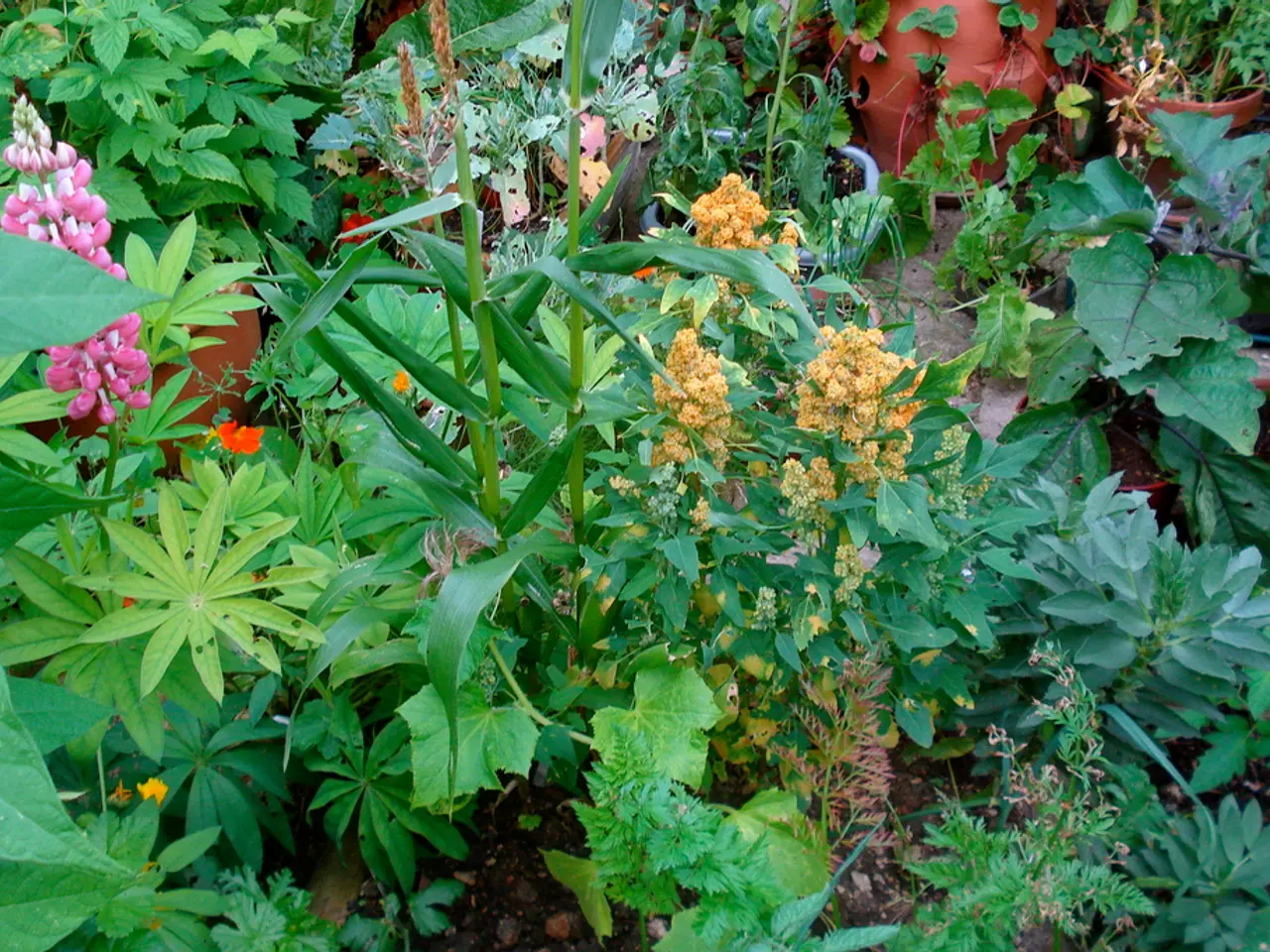Embrace Relaxation: The Low-Stress Approach to Gardening That Benefits You and Your Plants This Summer
In the pursuit of a greener and more eco-friendly lifestyle, many homeowners are turning to slow and mindful gardening. This approach encourages a connection to nature and promotes sustainable practices that benefit both the environment and the garden.
At the heart of slow gardening lies the emphasis on being present and intentional. Gardeners are encouraged to engage fully with their gardens, observing changes and responding thoughtfully rather than rushing through tasks.
One key practice in slow gardening is choosing the right plants for specific sites. This means researching a plant's care needs, mature size, site requirements, and other essential facts to avoid selecting a plant that will underperform in the garden. Native plants, for instance, are low-maintenance and can help attract pollinators while enhancing the ecology of the landscape.
Minimizing waste is another essential principle of slow gardening. This can be achieved by using resources already available, composting yard waste and kitchen scraps, and recycling items from thrift stores or the trash. Composting can be as simple as creating a basic compost pile or using old pallets for a more structured system.
Water conservation is also a significant focus in slow gardening. Choosing new perennials and plants that require less water is important, and practices such as drip irrigation systems, which target moisture directly to plant roots, can help reduce water usage.
Slow gardening also promotes sustainable gardening strategies such as creating rain gardens to manage stormwater runoff and improve local water quality. Employing native, low-maintenance plants that support biodiversity and conserve water is another aspect of this approach.
Slow gardening integrates well with practices like no-dig gardening, which is a simpler and more sustainable approach. This method avoids disturbing soil unnecessarily, helping to maintain soil structure and microbial life.
In terms of resource management, slow gardening encourages the use of hand tools and the avoidance of overwatering, excessive pesticide use, and minimal fertilizing. Practices such as right plant, right place, fertilize appropriately, minimize watering, mulch, attract wildlife, manage pests responsibly, reduce stormwater runoff, protect natural water bodies, and recycle yard waste are all part of this approach.
Slow gardening is not just about the garden, but also about building a personal, sustainable connection to your landscape. By making thoughtful choices that respect nature and your own pace, you can create a garden that is not only beautiful but also beneficial to the environment.
For those interested in trying slow gardening, keeping a garden journal detailing weather patterns, growth successes and failures, what was planted when, and other pertinent details about the landscape can be a helpful starting point.
In essence, slow and mindful gardening is about building a personal, sustainable connection to your landscape through thoughtful choices that respect nature and your own pace.
[1] Slow Gardening: A Guide to Cultivating Connection, Beauty, and Community [2] The No-Dig Garden: A Revolutionary Guide to Growing Fruit, Vegetables, and Flowers [3] The Mindful Gardener: Cultivating a Sustainable and Conscious Garden [4] Rain Gardens: A Complete Guide to Design, Installation, and Maintenance [5] The Well-Tended Perennial Garden: Planting and Pruning Techniques
- To foster a sustainable lifestyle and promote eco-friendly practices, some homeowners are adopting slow gardening, which focuses on choosing drought-tolerant plants like natives that require less water and are beneficial for the environment and biodiversity.
- In the process of slow gardening, homeowners can practice sustainable-living by employing strategies such as no-dig gardening, creating rain gardens, and composting, all of which lead to a more personal, sustainable connection to their home-and-garden, while also reducing waste and minimizing the impact on the environment.




